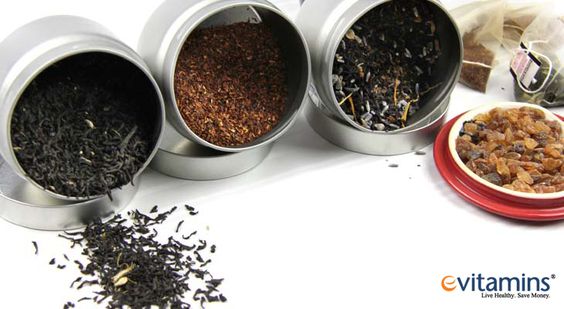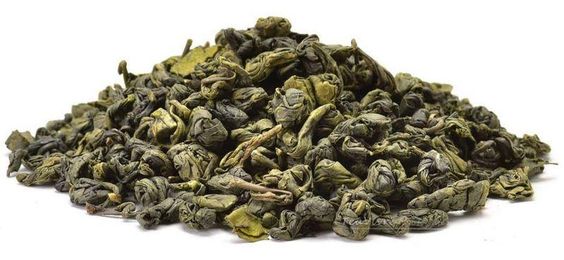The Structure and Process of Chunmee Tea
Chunmee tea is a type of green tea that has vegetal and nuttier flavor. It is produced in Anhui and Jiangxi provinces, China.
It is hand-rolled and has a light green color and vegetal taste. It has a bit more astringency than other green teas.

Source: https://i.pinimg.com
Harvesting
Although Chunmee is a popular green tea in China, it's also available in other countries such as Vietnam and India. This Chunmee tea is known as 'Precious Eyebrows Tea' in English. It has small, hand-rolled leaves that are shaped to resemble eyebrows.
This is one of the oldest Chinese green teas. This tea is high in antioxidants, which may provide many health benefits, such as weight management, reducing cancer risk, and improving blood cholesterol levels.
The first step in the harvesting process is plucking the tea leaves, which must be done very carefully to prevent oxidation. The fresh leaves are then dried to stop the fermentation process and maintain a green leaf. The leaves are then hand-rolled and pan-fired for the tea to have its distinctive shape and flavor.
This tea can be brewed either hot or cold and is an excellent choice for a light and refreshing drink. This tea has a distinctive taste, full of chestnut aromas. It pairs well with lemon and mint.
Chunmee tea has a unique flavor and is high in vitamins, minerals, and low calories. It contains catechins, caffeine, and L-theanine, an amino acid that may provide a variety of benefits including a boost in energy and lowering cholesterol levels.
This unique blend is made from a time-honored method that combines the finest tea leaves to create a delicate and pure infusion. It is a bold, refreshing brew that can be enjoyed on its own or mixed with honey, lemon, or mint. It can also be blended with other green teas like our Sencha or Gunpowder blends.
Frying
The traditional methods of making chunmee tea are still used today. To achieve the perfect shape, it takes great skill. Temperature, time, and coordination of hand movements must all be perfectly coordinated.
This tea is special because of its curved leaf, which is similar to traditional Chinese eyebrows. It is hand rolled, tossed and then pan fried, giving it a plum-like flavour and buttery taste. This high-quality, rare green tea is loved by many for its delicate, nutty aroma as well as its bold, refreshing flavor.
It is also known to have anti-inflammatory and antioxidant properties. It is great for skin health and can prevent strokes and heart disease. It can be brewed with hot water or cold, but should be drank in small cups to allow the tea leaves to release their full flavour.
The frying process stops the tea leaves from oxidizing by inhibiting enzyme oxidase. This causes the polyphenols to break down. It is a vital step in the tea making process to keep tea leaves fresh.
The tea leaves become soft and easy-to-roll and shape when they are fried. The frying process can also be used to remove any dust or impurities from the tea leaves that could affect their quality.
A delicate, refreshing brew, this cherished green tea is full of grassy tones and secondary notes of toasted chestnuts. This is one of our most unique blends, and our pyramid teabags offer the best way to experience this superior tea.
Rolling
The most popular green tea in China is the Chunmee. It has a unique production process compared to other teas.
The tender tea leaves are then hand-rolled and pan-fired to create a unique flavor and shape. This method of making tea is very popular in China. It helps to preserve all the health benefits of tea, including antioxidants and catechins.
This process is very important as it prevents the tea leaves from oxidizing, which can cause them to lose their color and taste. This helps to preserve the tea's freshness and high quality for a longer time.
The first step in this process is withering, which is a time-consuming procedure that removes surface moisture from the leaves and concentrates the tea juices. It takes ten hours to 14 hours for the leaf to wither properly and reach the perfect condition needed to go through the next step in the manufacturing process.
A layer of conditioned air is circulated among the leaves like Gunpowder tea to prevent them from drying out too much. This prevents the leaves from over-drying and causing them to mold.
After the leaves are dried, they can be rolled in special machines that rotate metal disks. This breaks up the cell nuclei, and then the leaves are spread on fermentation tables to aerate. The tea leaves will change in colour from greenish to coppery-brown as the oxidation process begins.
This stage is crucial for the quality of the tea and helps to ensure that it retains all of its nutrients and health benefits. The rolling process makes the tea look fresher. The final product will have a distinct shape and it will be easier for you to see the different parts of your leaf during brewing.
Drying
Chunmee, also known as Precious Eyebrow green, is a Chinese nonfermented green tea. It preserves the fresh leaves' natural vitamins, and nutrients. It is rich in antioxidants such as catechins, caffeine, and an amino acid Ltheanine, which may help lower your risk of developing Type 2 diabetes, heart disease, and cancer.
The tea is named after the shape of its leaves, which resemble eyebrows that are painted on porcelain dolls. The curled, slim tea leaves produce a smooth cup with a distinctive plum-like flavor.
This green tea is harvested and produced mainly in the Jiangxi province of southeastern China. It is similar in strength and color to Gunpowder, but has a stronger and more nuanced flavor.
When brewed properly, Chunmee tea is not too bitter. The oxidation process is what causes Chunmee tea to become astringent. This can be avoided by using a lower brewing temperature and a shorter brewing time.
To get the best results, steep Chunmee for at least 3 to 5 minutes. A longer brew will yield a richer, more satisfying cup with hints of smoke and dried plum notes.
Add a little honey or sugar to your Chunmee tea to get the full flavor. You can also combine the tea with other flavors to create a delicious combination.
Chunmee green tea is considered one of the most popular in the world, and it has been around for over a thousand years. It has been a staple of Chinese tea drinking, and it has also influenced the European concept of tea.

Source: https://i.pinimg.com
Shaping
Chunmee Green tea is a Chinese green tea that is renowned for its quality and longevity. Its delicate, eyebrow-like leaves are twisted using time-honored methods to create a tea of exceptional quality. It is known as the "king" of Chinese green Tea.
This tea is harvested in summer and autumn, unlike many green teas that are picked in spring. The quality of the tea will vary depending on how it is picked and the leaf material used.
This green tea is known for its delicate, plum-like aftertaste and sweet, subtly roasted flavors. It is a mild and easy-drinking tea, ideal for any time of day.
It is a great choice for weight loss because it lowers cholesterol and lowers the risk of developing heart disease. It stimulates hair growth and promotes metabolism.
These teas are produced in Jiangxi (China), where they are known for being "China's Capital of Pottery". The production of these teas is time-honored and requires great skill.
To make this tea, the shape of the leaves and the hand movements must be perfectly coordinated. The results are elegant and elegantly shaped leaves that have been dubbed a work of art.
The shape of the leaves can have a significant effect on the tea's flavor, liquor colour, and aroma. The leaves are then passed through hot and cold rolling machines to slightly break down the leaf. This intensifies the tea's flavor and creates the desired shape. The rolling/forming process stops natural fermentation and prevents mold growth. It also removes any grassy taste. It improves the oxidation and mixes chemical elements from stems with leaves, balancing the taste and removing bitterness.


No comments yet